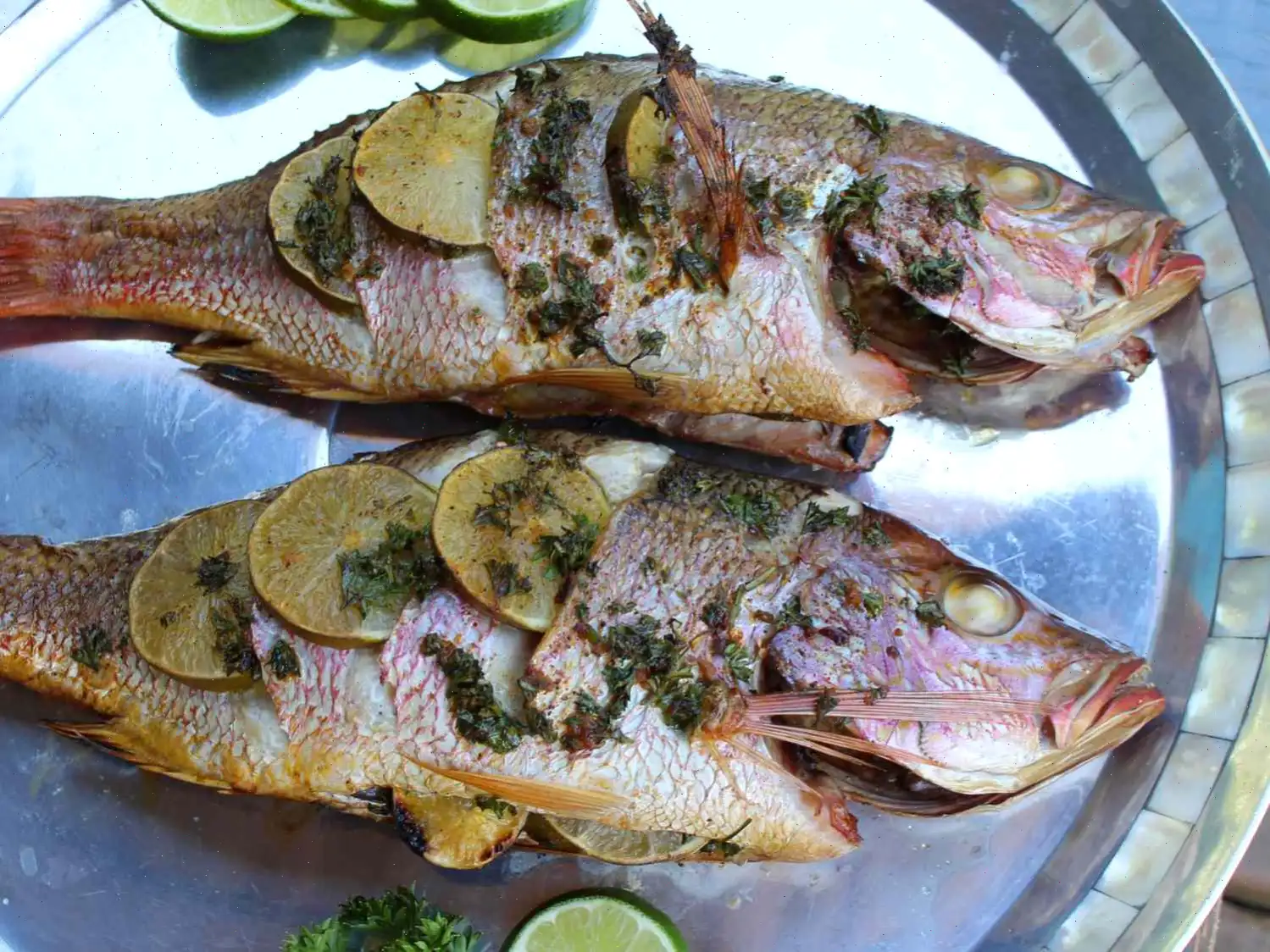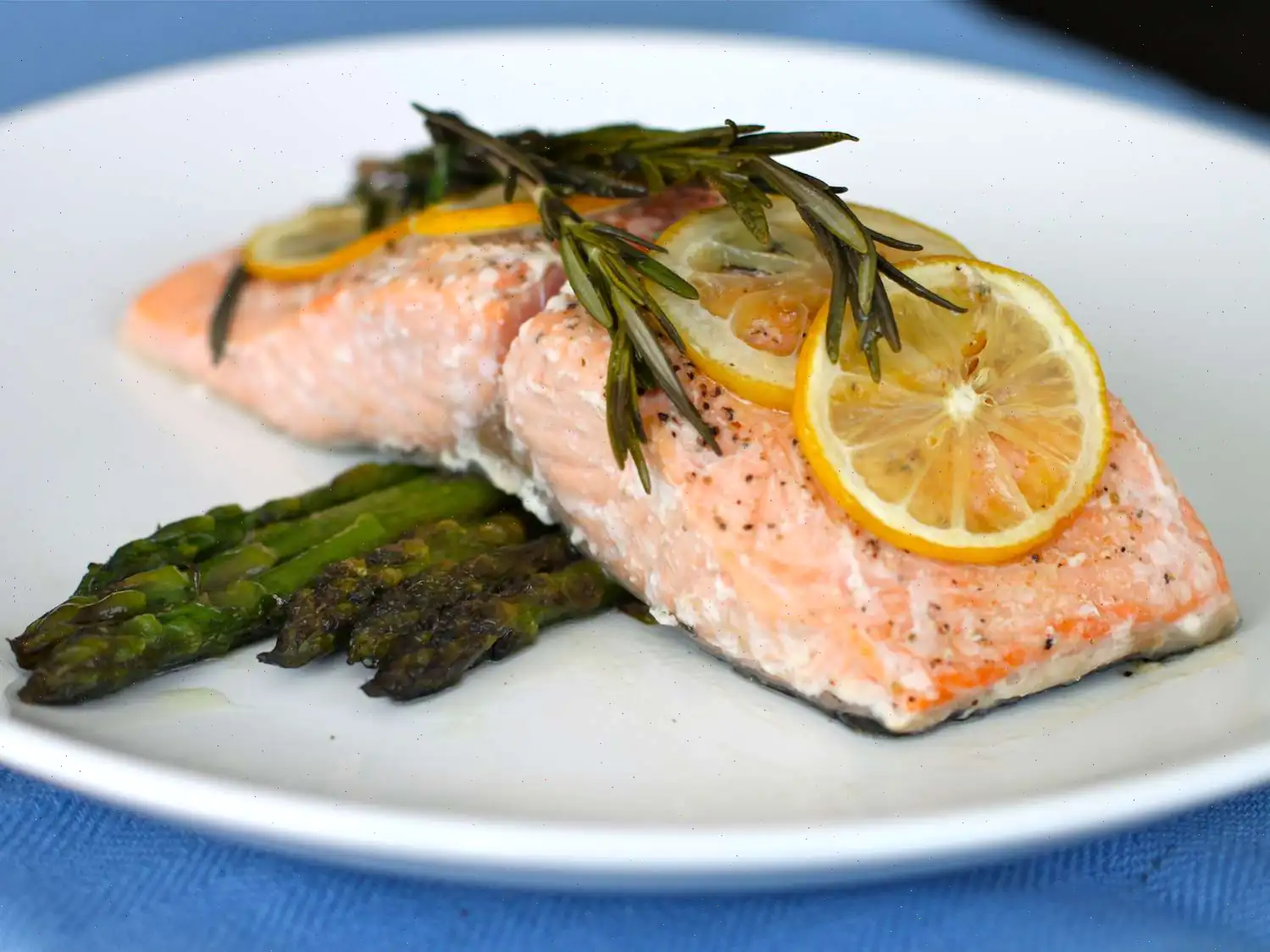
Smoked Whole Snapper Recipe
Ingredients
- 2 whole snapper (about 1 pound each), cleaned and scaled
- 3 limes, sliced
- 1 tablespoon olive oil
- 2 teaspoons Cajun seasoning (such as TDon's Cajun Goods)
- 2 cloves garlic, chopped
- 1/4 cup chopped fresh parsley
Directions
- Preheat the smoker to 350F (175C).
- Pat the fish dry with a paper towel. Make 3 small slits on each side of the fish and stuff them with lime slices.
- In a small bowl, combine the olive oil, Cajun seasoning, garlic, and chopped parsley. Mix well.
- Coat the fish evenly with the seasoning mixture, ensuring it is well covered.
- Place the fish in the smoker and cook until the flesh flakes easily with a fork, about 25 minutes.
- Check the internal temperature with an instant-read thermometer. It should read 145F (63C) when inserted into the thickest part of the fish.
- Once cooked, remove the fish from the smoker and garnish with additional lime wedges before serving.
Nutrition Facts (per serving)
| Calories | 134 |
| Total Fat | 4g (5% DV) |
| Saturated Fat | 1g (3% DV) |
| Cholesterol | 36mg (12% DV) |
| Sodium | 407mg (18% DV) |
| Total Carbohydrates | 5g (2% DV) |
| Dietary Fiber | 1g (5% DV) |
| Total Sugars | 1g |
| Protein | 20g (41% DV) |
| Vitamin C | 18mg (20% DV) |
| Calcium | 51mg (4% DV) |
| Iron | 1mg (4% DV) |
| Potassium | 464mg (10% DV) |
* Percent Daily Values are based on a 2,000-calorie diet. Your daily values may be higher or lower depending on your calorie needs. Nutrient information is not available for all ingredients. Consult your doctor or registered dietitian if you are following a medically restricted diet.
The History and Cultural Significance of Smoked Whole Snapper
Smoked whole snapper is a culinary tradition with roots in coastal regions where fresh fish was abundant and preservation methods were essential. The practice of smoking fish dates back centuries, originally used to extend shelf life before refrigeration. Snapper, prized for its firm texture and mild, slightly sweet flavor, became a favored choice for smoking. Early coastal communities in the Caribbean and the Gulf of Mexico developed techniques that combined local spices and citrus to enhance the natural flavors of the fish. Over time, these methods evolved into the delicacy enjoyed today, blending simplicity with rich, smoky depth.
Regional Variations
Regional differences in preparing smoked snapper reflect local tastes and ingredient availability. In the Caribbean, it is common to incorporate allspice, Scotch bonnet peppers, or fresh herbs into the seasoning, giving the fish a distinctively aromatic and spicy profile. Gulf Coast variations often emphasize Cajun or Creole seasonings, with garlic, paprika, and cayenne pepper. In contrast, Hawaiian versions might include tropical fruits like pineapple or mango in the marinade, creating a subtly sweet complement to the smoky fish. These variations demonstrate how the same fundamental technique adapts to cultural preferences and local produce.
Distinguishing Smoked Snapper from Similar Dishes
Smoked whole snapper differs from grilled or baked snapper primarily in its preparation and flavor profile. Smoking imparts a deep, rich aroma and tenderizes the flesh without drying it out, unlike baking. Grilled snapper offers a charred exterior but lacks the infusion of subtle smoke notes. Compared to fish stews or fried preparations, smoked snapper is less oily and maintains the integrity of the whole fish, including the skin and bones, which contribute to flavor and presentation. The technique preserves the natural taste while introducing complex smokiness, making it a standout in seafood cuisine.
Typical Serving Context
Smoked whole snapper is often served in casual outdoor settings, such as beachside barbecues or backyard gatherings, but it also appears in fine dining seafood restaurants. It is commonly paired with fresh lime, herbs, or simple sides like rice, roasted vegetables, or salad to highlight its delicate flavor. In coastal communities, it may be a staple at festive events, weddings, or holiday celebrations. Presentation often emphasizes the whole fish, showcasing its golden, smoked exterior, making it both a visual and culinary centerpiece.
Interesting Facts
- Snapper is not a single species but a family of fish, with red snapper being the most commonly used for smoking due to its firm, flavorful flesh.
- Smoking fish can enhance its nutrient retention, particularly omega-3 fatty acids, compared to other high-heat cooking methods.
- Historically, smoked snapper was a practical way for sailors and coastal communities to preserve food for long journeys without refrigeration.
- The aroma of smoked fish is often used in culinary competitions and festivals to signal freshness and culinary skill.
- Using whole fish, including bones and skin, contributes to a richer flavor profile than fillets alone, as collagen and natural oils are retained during smoking.








